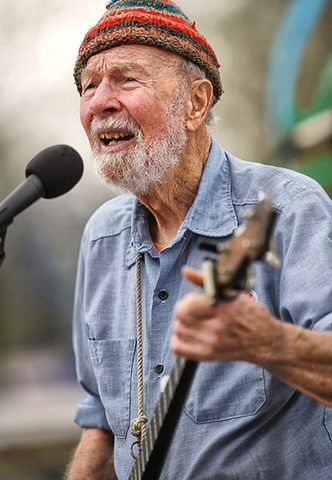In this third installment of our short series of Folk-Blogs, I want to mention my love for the work the Smithsonian does, especially for the preservation of folk music through the Smithsonian Folkways record label. Smithsonian Folkways continues to expand their mission of preservation. They have recently acquired the whole Arhoolie Records catalog. Arhoolie was another folk powerhouse in the 20th century. In addition to preserving, Smithsonian Folkways does an excellent job of making material available to people to hear.
The books that I have selected for this post feature some heavy hitters in the world of folk music, and were given even more gravity by being collected through the Smithsonian Folkways label. Woody Guthrie and Pete Seeger are American music icons. Find out more about them, and about American Roots music in these titles:
Bound for Glory
DB34214
By Woody Guthrie
Autobiography of a folksinger from Oklahoma, who traveled to just about every corner of the country with little more than the guitar on his back. Woody’s mother started him out singing the old songs and telling stories, but soon he was adding new words and music of his own. A spokesman for the downtrodden, he also sang of the beauty of the land he saw from the open road until 1943, when he went off to war with the merchant marine. Some strong language. 1943.
Pete Seeger: The Storm King: Spoken Word Set to a World of Music
DB77113
By Pete Seeger
Legendary folk singer (born 1919) narrates personal stories and poems, set to original music by nearly fifty performers from diverse traditions, including African, Native American, blues, bluegrass, folk, and jazz. UNRATED. Commercial audiobook. 2013.

Romancing the Folk: Public Memory and American Roots Music
DB55093
By Benjamin Filene
Traces the history of the preservation, collection, and production of American roots music. Describes pioneering efforts of John Lomax to record the songs of black men in southern prisons in 1933 and the influences of folk music artists such as Lead Belly, Muddy Waters, and Bob Dylan. 2000.
